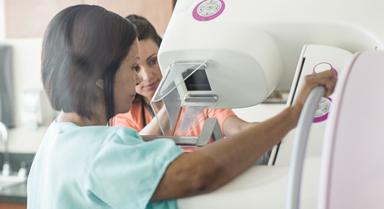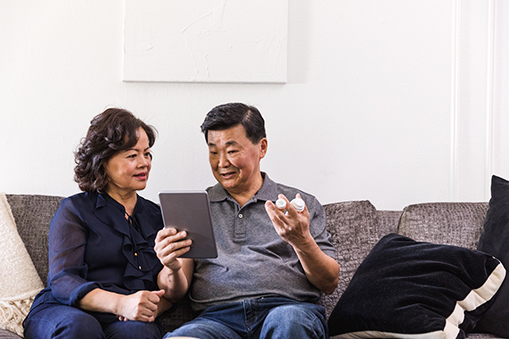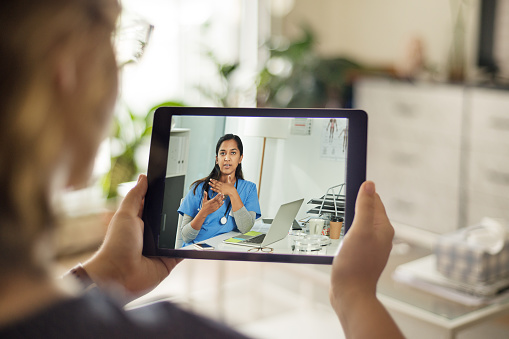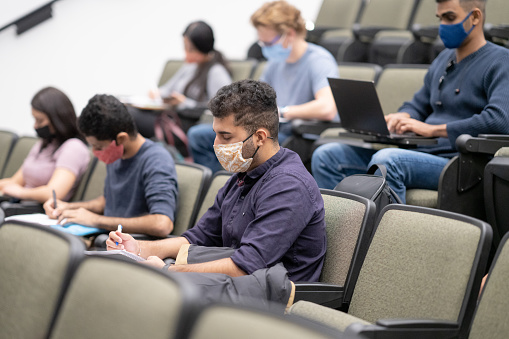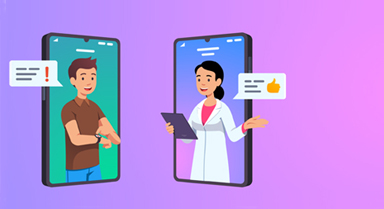How telehealth is disrupting healthcare
Imagine instantly connecting with a doctor at anytime and anywhere simply using a mobile phone or computer. This is telehealth. It can help save you time during your busy lifestyle, give you access to quality, reliable healthcare, as well as reduce hospital admissions. So why isn’t everyone using it?
What is telehealth?
Telehealth is a rather straightforward concept. Simply put, it’s using telecommunications technology to provide medical care, by connecting patients with doctors.
Modern telemedicine began in the early 1900s in the Netherlands with the transmission of heart rhythms over the telephone, which was followed by transmissions to radio consultation centers in Europe in the 1920s. In the 1940s, radiographic images were transmitted by telephone between cities in Pennsylvania.1
With the advent of the internet, telehealth has been propelled into the future. Mobile apps such as the Cigna Wellbeing® and Cigna Envoy® apps carry a library’s worth of information. Patients and board-certified doctors talk face-to-face via video chats, and then send the data to any healthcare provider and location instantly. The benefits of telehealth are literally in the palm of our hand.
The benefit of convenience
The most obvious benefit of telehealth is 24/7 access to care through video or phone consultations with a doctor. From those living in remote, underserviced areas without a local medical or surgery center, to those who have a busy schedule, telehealth provides around the clock access to physicians or to specialists. Telehealth works around patients’ schedules, so there’s no need to wait for an appointment or travel to the doctor’s office. This saves time, cost and helps patients get immediate care.2
As well as the physical distance it bridges, telehealth can provide familiarity and comfort for those living abroad. Patients can speak with someone who knows their language, as well as their medical history and treatment preferences.
With fewer barriers, people are more likely to seek medical advice for those little things – like that mole on the lip, the sore neck – things we don’t necessarily prioritize with a trip to the doctor’s but nonetheless should be checked out. As well as keeping people out of the emergency room for minor complaints, this helps ensure early intervention and peace of mind.
The earlier a condition is treated, the greater the chance of success, usually with less invasive treatment and at a much lower cost.3
What are the long-term benefits of telehealth?
What is not immediately obvious are telehealth’s long-term benefits, particularly for those with chronic conditions. With immediate access to medical advice from one single provider there is improved continuity of care3 – it’s easy to stay in touch and to follow up.
With the Cigna Wellbeing app, for example, patients can connect with a number of long-term management programs that offer support for managing chronic conditions such as diabetes and hypertension. With close to three quarters of all deaths in 2016 being attributed to conditions like these,4 the benefits of telehealth have never been greater.
“A person’s health status can change daily, so having the convenience of a mobile app that caters to varying levels of health and wellness needs – whenever one might need and wherever one might be - is essential in this busy world.” – Dr Jose Quesada, Chief Medical Officer, Cigna Global Health Benefits.
But telehealth isn’t just for those who are ill. Ideally, healthcare providers want to keep people healthy, not just treat them when they’re sick. By preventing long-term, costly health events, health care costs and premiums3 are curbed and patient quality of life is improved.3
Telehealth is perfectly suited to support that aim. Apps can serve up articles and recipes. Some programs such as the Cigna Wellbeing app have wellness coaches who can guide users through behaviour changes in their lifestyle. This is particularly important in regards to mental health, including stress, one of the most common workplace ailments. It’s just as important to take care of our minds, as well as our bodies.
How does it benefit the employer’s bottom line?
It’s not just patients and doctors who see the benefits of telehealth. It makes business sense too. Overall, telemedicine can be an enormous money saver for employers. Some experts, according to BenefitsPro, have determined that telehealth visits for the most common health conditions save employers an average of $472 per episode of care.5
These savings come from fewer sick days and improved productivity, as well as reduced healthcare costs.
“From a strictly business perspective, technology is the key to cost control in terms of helping to provide more accurate diagnoses, leading to fewer unnecessary procedures. It also enables earlier intervention to minimize the need for costly treatments in the first place.” – Phil Austin, Cigna CEO
Telehealth is also something employees want. In a recent survey, over 71% of those asked want their physicians to adopt mobile health applications. Unsurprisingly, the majority of millennials, the largest part of the workforce, support using telehealth instead of visiting a doctor’s office.6
Why isn’t everyone using telehealth?
In contrast to high levels of interest in telehealth, there is a shockingly low number of people using it. In the US alone, only 0.5 percent of the 400 million potential patients are being treated with telehealth tools.7
Even amongst the employees who have access to telehealth, only 3% were using the service.8
Currently, people just don’t know what it can do and how it can help. The low uptake means the full benefits of telehealth are yet to be fully understood. More work needs to be done to encourage people to use the technology.
How Cigna is leading the way in telehealth
Cigna wants everyone to benefit from telehealth. The Cigna Wellbeing app offers access to a global telehealth service, providing phone or video consultations. But the main focus is on prevention.
To keep an eye on the user’s health and well-being, the app monitors and assesses sleep habits, nutrition, stress and physical activity. It uses the data to provide personalized information and support from a library of content. For additional support, users can connect with wellness coaches who will help and encourage them to make improvements to their lifestyle that can improve the user’s quality of life.
This is also particularly invaluable for the management of chronic conditions like diabetes, hypertension and stroke. Continual guidance can help manage symptoms and stop progression of the disease. But any unusual results can be tracked and immediately flagged. The app can then send the data and results directly to any Cigna specialist, ensuring that intervention happens as soon as possible.
What is the future of telehealth?
While the usage is currently low, the consolidation of suppliers of telehealth and the increase of millennials in the workplace is sure to increase the adoption of telehealth tools. Once more people have embraced it, the projected cost savings and improved quality of life will soon prevail.
To help increase the uptake of telehealth, more staff and employer education on its benefits is needed. A better customer experience will undoubtedly help encourage more users too, so there is still work to be done.
For more information on the Cigna Wellbeing app and the telehealth services available through the app, visit this website.
1 Telemedicine: Past, present, and future, Cleveland Clinic Journal of Medicine, 2018
2 Consumers Like Telehealth, But Still Prefer Face-to-Face Healthcare, https://mhealthintelligence.com/news/consumers-like-telehealth-but-still-prefer-face-to-face-healthcare, 2018
3 Impact of Telemedicine in Management of Chronic Diseases, https://openjournals.ljmu.ac.uk/index.php/lhsc/article/download/195/205, 2018
4 NCD Countdown 2030: worldwide trends in non-communicable disease mortality and progress towards Sustainable Development Goal target 3.4, https://www.thelancet.com/journals/lancet/article/PIIS0140-6736(18)31992-5/fulltext, 2018
5 What is Telehealth and How Can it Support Your Business?, https://theolsongroup.com/what-is-telehealth-how-it-supports-business/, 2018
6 Salesforce ‘2017 Connected Patient Report’: Payers and Pharmaceutical Firms Earn Patient Trust, Early Days for AI, https://www.salesforce.com/blog/2017/06/2017-connected-patient-report.html, 2017
7 Future of Healthcare?, https://www.greenlightmedical.com/telehealth-and-the-future-of-healthcare/, 2018
8 More employers are offering telemedicine, but why aren't workers using it?, http://www.chicagotribune.com/business/ct-telemedicine-use-benefit-1009-biz-20161007-story.html, 2016











